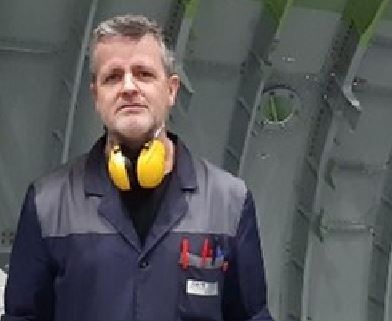The years of suffering and uncertainty caused by the lack of activity resulting from the pandemic are behind us. Now we can say that we have enough workload, the activity is picking up and we look to the future with optimism, excited about our growth expectations, but making great efforts to satisfy our customers.
At Aernnova Aerostructures Alava we are going through a double transformation that is essential to maintain our competitiveness in an increasingly dynamic and demanding environment. On the one hand, we continue to advance in specializing in those jobs in which we are more competitive, and on the other hand, we are beginning to assume internally tasks that until now were more centralized.
Our future will focus on the comprehensive management of three key areas:
Automated Assemblies: The best example of this area is the CWB of the A220, an assembly in which our extensive experience in manual assembly has been combined with the development and mastery of the most advanced automation solutions. This achievement would have been impossible without the hard work of the Industrialization Team, which, starting from scratch, designed and built an automated line at the forefront of the industry.
Industrialization of Complex Assemblies: The complexity of these projects is not always due to the difficulty of the piece itself, but also to the timelines, costs, required quality, and sometimes the lack of prior knowledge about an unexpected assembly.
Special Projects: A clear example of this category is the A220 range extension project, in which, in addition to developing the necessary processes and tools, we must make modifications to a finished aircraft at the customer’s facilities, which entails significant responsibility.
Sometimes, the complexity of an automated line, in charge of assembling a highly critical part, can overshadow the work of other teams, which continue to meet our customers’ needs by delivering manual assemblies. Today we want to highlight the day-to-day work of one of these teams, giving it the recognition it deserves. In this sense, it is an honor to present to the readers the daily work of the Manual Assembly Cell of our factory.
In mid-1994, a handful of young people in their twenties embarked on an exciting venture with the goal of carrying out complex aerospace assemblies while remaining competitive.
That goal was achieved, and that immense drive has brought us here, cruising at full speed. Today, we have the opportunity to continue competing, with the advantage of the knowledge gained by the people who make up the Cell, and we also have new technological tools that will continue to accelerate us toward the future.
The evolution has been constant, and continuous improvement is our banner.
The tools, machines, and equipment have evolved, as have the support systems, all with the aim of optimizing the production processes. We have moved from paper-based production orders to digitized processes in Delmia, from entirely manual operations to optimized operations in semi-automatic machines (CIMPA, controlled feed machines, etc.).
The Manual Cell is made up of people from different departments, necessary to operate autonomously and meet objectives: Production, Quality, Processes, and Production Control, all coordinated with the rest of the company’s departments.
The Manual Cell is multi-client (Embraer, Sikorsky, Airbus, Airbus Atlantic, Airbus Helicopters, Leonardo, Lilium, Honda, Indra Sistemas, AAS) and multi-program (EMB170/190, KC390, S92, A220, A350, A320, Superpuma, NH-90, Wing and Canard Lilium, flaps and ailerons for Honda, Indra radars, spare parts and repairs).
It is capable of performing metal, composite, and hybrid assemblies, as well as providing products with final paint finishes.
The start of each new working day in the Manual Cell team is as follows:
The supervisors organize the Production staff in startup meetings to ensure the planned tasks are met, always reviewing the health and safety risks of the assigned tasks and reminding the team that, in case of doubt, it is better to stop and ask than to improvise. The operators review their workstations and the assembly status to continue according to established processes, reporting the traceability data required by production orders in Delmia and offering improvement ideas.
The Process staff accompanies the assemblies, ready to resolve any issues, and works continuously on improvement actions derived from the daily monitoring of Production, such as reducing costs, hours, and cycles, improving quality, LEAN actions, PDCA, 8Ds, etc.
The Quality staff ensures compliance with regulations, certifying that our products meet the specifications in the drawings and applicable documentation. They also actively participate in continuous improvement and customer satisfaction.
The Production Control staff supervises inventory to ensure the assembly line is continuously supplied, avoiding stoppages due to material shortages and ensuring traceability of components in the system.
In one corner of the Manual Cell, there is a rare and peculiar assembly, a legacy from our colleagues at GMAPSA: the radar pedestals for Indra. We manufacture radar pedestals to monitor European airspace, both civilian and military. We also carry out on-site repairs, wherever they are installed: India, Madeira, Lithuania.
And one fine day, when we are sitting at home after an exhausting day at work, we see on the news how the president of the government is evicted from a press conference at a NATO base in Lithuania: A radar on the pedestal built by us has detected two unidentified Russian fighters flying over Lithuanian airspace.




